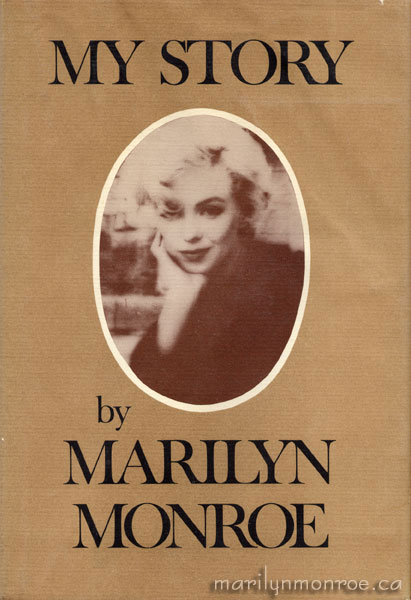 |
This is an interesting read but it was actually ghost-written by Ben Hecht. There are no photos but it is worth picking up if you can get it. | ||||||||||||||||||
|
|||||||||||||||||||
| |||||||||||||||||||
|
BOOK REVIEW BY DAVID MARSHALL Ever since its publication in 1956,
people have been debating if “Profiles in Courage” were actually written by
then-Senator Kennedy or was the work of a ghost writer, likely Ted Sorensen. The
same non-ending debate can be applied to the true authorship of Marilyn
Monroe’s “My Story.” Did she actually write it or was the book the product
of 20th Century-Fox’s publicity department channeled through the
pen of Ben Hecht? The question rarely raised in regards to both books is “Does
it really matter?” Please don’t think I am
comparing the Pulitzer Prize winning “Profiles” to Marilyn’s autobiography
in any way other than pointing out that both are books whose authorship has
become more of a focus than the books’ actual contents. And it is the contents
of “My Story” that I want to address here. That Hecht was commissioned by
Marilyn’s agent, Charles Feldman, to write the book should not detract from
the story and the words presented. Neither should the fact that the book did not
reach actual publication until 1974. The book had been serialized briefly in the
London Empire News in the mid-50s but it was not until twelve years after
Marilyn’s death that it was finally issued in book form. The result is more of
a group effort, with Hecht, Sidney Skolsky and even Milton Greene adding
touches, inserting anecdotes and editing. But whether or not she ever actually
sat down and wrote a word is beside the point. Most of the book is a result of
several months of Marilyn and Hecht meeting on a regular basis to go over the
facts and memories of Marilyn’s life to that point, (1954). So many things happened in the
early Seventies as regards to Marilyn’s story. After the 1973 publication of
Mailer’s “Marilyn,” seems like everyone and their neighbor decided to
bring out their version of “the truth.” This includes Mrs. Murray’s
extensive interview in “The Ladies Home Journal,” followed up by her
paperback “The Last Months,” Robert Slatzer’s “Curious Death” and even
W.J. Weatherly’s “Conversations with Marilyn.” The long trek towards
telling the “real” story was off and running and the finish line has yet to
be crossed. For every Donald Spoto there is a Donald Wolfe. For every Milo
Speriglio there is a Barbara Leaming. The truth here is that even “My
Story” has its own embellishments. But what is truly surprising is that the
book does not paint the usual horrific childhood of deprivation. The stories of
the Dickens orphan we’ve come to know so well is not belabored here. It is in
that small detail that the reader slowly comes to the conclusion that even if
she didn’t sit down at the typewriter herself, Marilyn had a great deal of
input into the book’s content. She’s upfront about the molestation and the
trauma of seeing her own mother removed for institutionalization, but she
doesn’t dwell on it. Above all, you can “hear” Marilyn’s voice in these
pages. Like Weatherly’s “Conversations,” “My Story” has the ring of
truth to it. Maybe Hecht, Greene, Skolsky added grammar and punctuation
corrections but over all you can believe what the book has to say. Again, does
it really matter who held the pen? The only real fault I can find in the book is that it is obviously a project that was dropped and never completed. This is not an autobiography, covering Marilyn’s life from birth to that last summer. It is a collection of anecdotes, rambling thoughts, and Marilyn Monroe’s own take on specific events up to the year 1954. As much as the reader might yearn for her insights on the Miller marriage, the shelving of “Something’s Got to Give,” or the events of the 1962 Mexico trip, they won’t find it here. As to what she might have thought about the major players of her later years, (Dr. Greenson, Pat Newcomb, and that family whose name begins with a K), we’ll never know. Like Marilyn herself, the book ends far too soon. |
|||||||||||||||||||
